You might feel torn between casual fun and competitive play, and wonder which style fits you. Debates over game balance in Warhammer 40k, Street Fighter, and Super Smash Bros. have raged for years. You are not alone in trying to pick a lane.
This guide explains the nine big differences between chill GG sessions and sweaty tournament play. We cover time, goals, skills, health, and how each community feels from the inside.
So, are you a laid-back Great Saiyaman or a sweat-soaked Vegito? Let’s find out.
Key Takeaways
Competitive gaming attracts over 454 million fans, features prize pools up to $3.1 million per event, and often requires daily drills longer than four hours.
Casual gamers value enjoyment and flexibility. Mobile hits like Block Blast Adventure Master reached 46 million downloads in six months for quick, low-pressure play.
Esports pros risk burnout and health issues from heavy training schedules, sometimes 14 hours per day, while chasing performance.
Toxicity shows up more in competitive scenes compared to friendlier social play on Discord or mobile games.
By 2022, global esports viewership was projected at 645 million and revenue at $1.1 billion, and the International Olympic Committee considered esports events.
Table of Contents
Defining Casual and Competitive Gaming
Some of you boot up Super Smash Bros. Ultimate for laughs with friends on Switch or Wii U. Others grind ranked in Project M, chasing wins like Goku chases Super Saiyan forms. See what shapes each style at HelloMillions, an online social casino platform that offers chill spin rooms and party tables for casual hangs, plus tournaments, leaderboards, and club challenges for players who want to compete.
What is Casual Gaming?
Casual gaming puts fun before scoreboards. You jump into Super Smash Bros. Ultimate or classic GameCube picks for pure enjoyment, not leaderboards. Think Mario Kart with friends or swapping Android 18 for Goku in Dragon Ball FighterZ just to watch the chaos—this is the definition of casual gaming at its finest.
You can play solo against CPUs, try PVE, or run quick matches without sweating ranks or rigid metas. Simple controls invite everyone, from rookies to parents who never touched a GameCube controller. Even Call of Duty has casual playlists where loss streaks do not ruin the night.
I have spent hours messing with random characters, hello Little Mac tilt, and these sessions create relaxed spaces for laughs and light trash talk, not lobbies full of Gokus chasing prize pools.
What is Competitive Gaming?
Competitive gaming raises the stakes. Players chase wins, rankings, and mastery. Think Super Smash Bros. Brawl tournaments or Apex ranked grinds.
A serious player works daily to outsmart rivals with tight combos like Akuma’s in Street Fighter IV, or picks characters such as Trunks and Goku Black for meta edges. You will hear terms like nerfed, meta, and smurfing, which means a strong player uses a new account to fight easier opponents.
Events draw crowds like sports. Prize pools can hit $3.1 million. Teamwork matters, and a single Mercy revive can flip an Overwatch match.
Competitive play now gets global attention. The International Olympic Committee has even discussed esports on the big stage. High pressure builds adrenaline and stress. Not everyone enjoys sweating through Marvel vs. Capcom 3 while bracing for another round of nerfs.
Key Differences Between Casual and Competitive Gamers
Some of you pick up Super Smash Bros. for Nintendo 3DS to unwind. Others train like you are aiming for EVO. Whether you spend an hour on Meta Knight or grind Tekken 7 with Jin Kazama, your goals separate you from the next player.
Gaming Goals and Objectives
Casual gamers race Mario Kart 8 for laughs, not leaderboard spots. You might pick Princess Daisy or Peach just to see who eats the spiny shell. Stress and stats take the back seat while fun drives the session.
I still grab Toon Link on Super Smash Bros. for Nintendo 3DS because he is funny with flippers on, not to nudge my K/D ratio. Competitive players aim higher. They care about game balance, study Volcarona on Smogon, and drill combos in Ultra Street Fighter IV to climb ranks.
I have a friend who practices daily as Gogeta from Dragon Ball GT to crush Broly mains at locals. Those players track nerfs and meta shifts like weather. They want high scores and achievements that prove the grind.
Time Commitment

Goals shape sessions, but time turns goals into wins. Competitive players treat practice like a training arc in Dragon Ball Z. Many put in four plus hours of skill drills every day.
Gohan did not reach Super Saiyan 4 without practice. A serious player does not enter an MVC2 bracket cold either. Mastering Chun-Li or Mileena means drilling setups and learning frame data, which is timing measured in single frames.
Tuning Eldar loadouts or grinding techs in Street Fighter III can eat whole weekends. Casual folks who main Demoman or hop into Dead or Alive 5 boot up when life allows. No one should chase a Videl skin at midnight unless that is the plan. Each side chooses a pace, from daily scrims to post-dinner Hugo memes.
Skill Level and Learning Curve
The skill gap can feel huge, like Tenkaichi series versus Marvel vs. Capcom: Infinite. Competitive players train for hours, pushing pixel-perfect inputs with Kazuya or Evil Ryu. They study RNGs, map stages, and grind ladder until wrists ache.
Pros treat every session like practice. Many young hopefuls log 8 to 10 hours to keep up. Casual players fire up Stryker or Lucario after work and laugh when Mavado lands a twinking move, a low-level character wearing high-end gear.
My friend once said, “Sometimes I mash Mr. Game & Watch while others debate nerfing Pharah.” Pros rarely do that. They read patch notes like lab reports on Decapre or Brigitte looking for cracks.
Social Interaction and Community Focus
Casual communities aim for connection first. You might throw an Animal Crossing party or help friends catch Dragonite and chase Mega Evolutions. Chat is lively, with jokes about Kid Goku’s wild kit or Torbjörn turrets.
Competitive spaces follow leaders, like top Reaper mains or sharp Rolento users at Marvel vs. Capcom 3 locals. Players chase skill points and focus hard during matches, then debate tech on Discord after. The mood shifts with the goal, fun first or trophies first.
Pros and Cons of Casual Gaming
Casual gaming lets you chill with Mario or squeeze in quick fights as Android 17. It also has tradeoffs that may surprise even Tanya mains.
Advantages of Casual Gaming

Casual gaming puts well-being first and fits your day instead of ruling it.
- Fun comes before ratings. You can enjoy Shujinko’s story without sweating outcomes.
- Play fits any schedule, five minutes or five hours. Balance is easier to keep.
- Exploration beats pressure, so you can wander Hsu Hao’s world at your pace.
- Lower stress helps recovery after work. A quick Tetris run can calm your brain.
- Rich worlds invite you in. You can drop into Tanya’s world with no rank to lose.
- The learning curve is gentle. Fewer harsh punishments help new players grow.
- Communities feel welcoming. People share power-up tips and cool Easter eggs.
- Choice rules. You decide what is fun and when to stop, every single session.
Disadvantages of Casual Gaming
Even relaxed play has downsides that can sap your interest over time.
- Matchmaking can throw you against sweaty players. You wanted a “GG,” not a scrim.
- Some casual genres sneak in stress with timers or endless auto-runs on Switch or mobile.
- Shallow loops cap mastery. After a week of Flappy Bird, you might crave deeper systems like League or Valorant.
- Some games lack depth and challenge, which slows skill growth.
- Social features can feel thin compared to Discord-driven ranked communities.
- Many casual titles get weak post-launch support outside big studios. Content dries up.
- Microtransactions appear everywhere and often add little long-term value.
- You miss organized esports scenes with structure, rewards, and hype like LCS or EVO.
Pros and Cons of Competitive Gaming
Competitive play can sharpen your skills and open real paths, from local brackets to major tournament play. It also brings pressure that you have to manage.
Advantages of Competitive Gaming
Stepping into competition can level up your game and your network.
- Esports tournaments offer huge prize pools and pull in massive crowds online and in stadiums.
- Sponsors fund salaries, gear, and scholarships for top League or CS:GO players.
- You build critical thinking. Fast reads and quick choices become second nature.
- Team games teach real teamwork. Clear roles and comms matter when holding mid.
- The global community links players across cultures through Discord servers, events, and streams.
- There is clear progression, from ranks to seasons to LAN brackets.
- Some colleges run esports programs and award tuition help for top players.
- Better sleep and training boost reaction times, so health habits start to matter.
- Analysts expect bigger LAN crowds by 2025, thanks to Twitch and YouTube.
For some of you, a strong K/D ratio becomes more than a number. It turns into a career path.
Disadvantages of Competitive Gaming
Competition can be thrilling, but the grind hits hard if you are not careful.
- Long sessions can harm health, from poor sleep to joint pain and stress.
- Addiction risk grows with nonstop practice and the need to win.
- Research links heavy play with more soda and sometimes tobacco use in teens.
- High pressure triggers emotional burnout, even on top teams like Fnatic.
- Many pros burn out before 25 due to overtraining and short recovery.
- Social skills can slip when Discord replaces face-to-face time.
- Toxicity in ranked Dota 2 or League is common. Mistakes become public fast.
- Life balance suffers. School, work, and sleep lose out to ladder points.
If stress or sleep problems build up, talk to a healthcare professional. Your health comes first.
Psychological and Emotional Impact
Your mind can shift as fast as a Mario Kart race start. Light sessions relax you, but ranked stress stacks quickly if stakes rise.
Stress Levels in Casual vs Competitive Gaming
Casual play often feels like a soft reset after a long day. Games like Animal Crossing and Stardew Valley can lift your mood and lower stress levels. During finals week, I mined in Minecraft to clear my head. No ranks on the line, just blocks.
Competitive gamers face a different storm. Esports scrims push stress with sudden-death rounds and prize money pressure. A friend developed eye strain after long Overwatch League practice blocks. The adrenaline in Fortnite or Valorant ranked is real, but anxiety can rise with it.
Emotional Rewards and Challenges
Winning a high-stakes League match can feel amazing. Mastery, recognition, and a simple “GG” deliver real pride. Losses hit hard though. Frustration builds whether you play for fun or for rank.
Long grind sessions can slide into burnout. Twitch chat and Discord help you feel connected, but they do not fix isolation during losing streaks. The rush sharpens your focus, yet stress grows with each new season pass. Even casual players get salty after repeated defeats.
Social Dynamics and Community Culture

Steam chats, Discord groups, and Minecraft servers shape how people bond, argue, and improve. Each crowd has its own vibe.
How Casual Gamers Interact
Casual players show up for laughs and connection. They swap memes, trade short clips, and jump into mobile hits like Candy Crush or Pokémon GO because quick sessions fit busy days. Friends drop into Animal Crossing islands just to send a silly letter.
Rage-quits are rare. Gaming is not a measure of self-worth, so balance with work and outside hobbies is common. Lower impulsivity stands out. People savor low-pressure fun with friends across Xbox Live or PlayStation Network. Small wins are shared wins.
The Culture of Competitive Gaming Communities
Events like EVO and The International show how big competitive gaming has become. Teams like Team Liquid, FaZe Clan, and T1 treat practice with strict discipline.
During big events, Discord buzzes with memes about “sweats,” “cheaters,” or WAAC, which means Win At All Costs. Calling someone a “cheesemaster” after a tricky match can spark heated debates seconds before queueing again.
Players push for diamond ranks in League or crisp aim in Counter-Strike. The focus gets intense late in a close round. Mistakes draw flak across Twitch chat. This culture values skill over relaxation, and that shapes every interaction.
Transitioning from Casual to Competitive Gaming
Moving from casual to ranked play takes new skills, better habits, and a tighter mindset. If you crave challenge, this step can be exciting.
Skills Development
Young players grind reaction speed, map awareness, and comms. I have spent hours in Aim Lab and the Valorant range to sharpen headshots. It works, slowly.
Many aspiring competitors put four plus hours per day into skill development, much like practice for school sports. Discord helps with finding teammates, scheduling scrims, and reviewing mistakes on stream or video.
Motivation shifts too. You go from chilling with friends to climbing ranked ladders and eyeing local tournaments. YouTube guides from players like TenZ can boost mechanics, but focused reps matter more.
Mindset Changes
Switching to competition rewires your goals. Casual sessions chase curiosity and comfort, like wandering Hyrule or playing Among Us with friends. Once you start climbing in Valorant or League, fun shares the wheel with skill building.
You begin studying strategies, tracking stats on tools like Tracker Network, and watching pro VODs. The stress rises with the stakes. Even queuing for solo ranked can raise your heart rate. What feels chill to one person can feel sweaty to another. Context matters every night you log in.
Balancing Casual and Competitive Gaming
Finding your rhythm between story nights and PvP grinds keeps games fun long-term. A little structure prevents burnout.
Finding the Right Gaming Style
Your gaming style sits on a line between casual and competitive. Some of you love chaotic, goofy matches. Others want structure, mastery, and team VOD reviews like esports squads.
Plenty of streamers mix both. They grind leaderboards, then switch to party games. Your intent matters most. You might want stress-free couch co-op with Mario Party today, then ranked Overwatch scrims tomorrow. There is no rulebook. Your goals set the tone for each session.
Avoiding Burnout
Now guard your energy. Pros like Faker and Doublelift have put in 14 hour days, and that can break people. Burnout often comes from chasing perfect play, too much practice, team friction, mental and physical fatigue, and losing the love for the game.
Take regular breaks between matches. Set a stopping time. Energy drinks at 3 AM do not fix a tired brain. Consider simple recovery, like stretching, short walks, and real meals. If mood swings or sleep issues stick around, talk to a professional or school counselor. Healthy players improve faster.
The Future of Casual and Competitive Gaming
Cloud tech and VR keep reshaping casual play, while esports keeps scaling with bigger stages. Expect more overlap between both styles.
Trends in Casual Gaming
Casual games focus on easy entry and broad appeal. In 2023, Block Blast Adventure Master hit 46 million downloads in six months. That shows love for fast, snackable sessions.
Many new players prefer simple controls and light stories. Some chase immersive storytelling in Stardew Valley. Others want short sessions after work on Apple Arcade or Google Play Pass. Social features blur the line, with leaderboards that tease competition without forcing it.
The Growth of Competitive Gaming and Esports
Compared to casual growth, competitive gaming feels turbocharged. Esports now has over 454 million fans and around $1.1 billion in revenue. Worlds and The International pack arenas while teams chase multimillion-dollar prize pools. One event can pay $3.1 million to top players.
By 2022, projections showed 645 million global viewers with 14 percent yearly growth. Major sponsors like Intel invest, and Twitch boosts exposure. The Olympic Committee even started talks about adding esports. Fair rules and stronger governance are rising as the scene matures.
How Will Casual and Competitive Gaming Evolve in 2025?
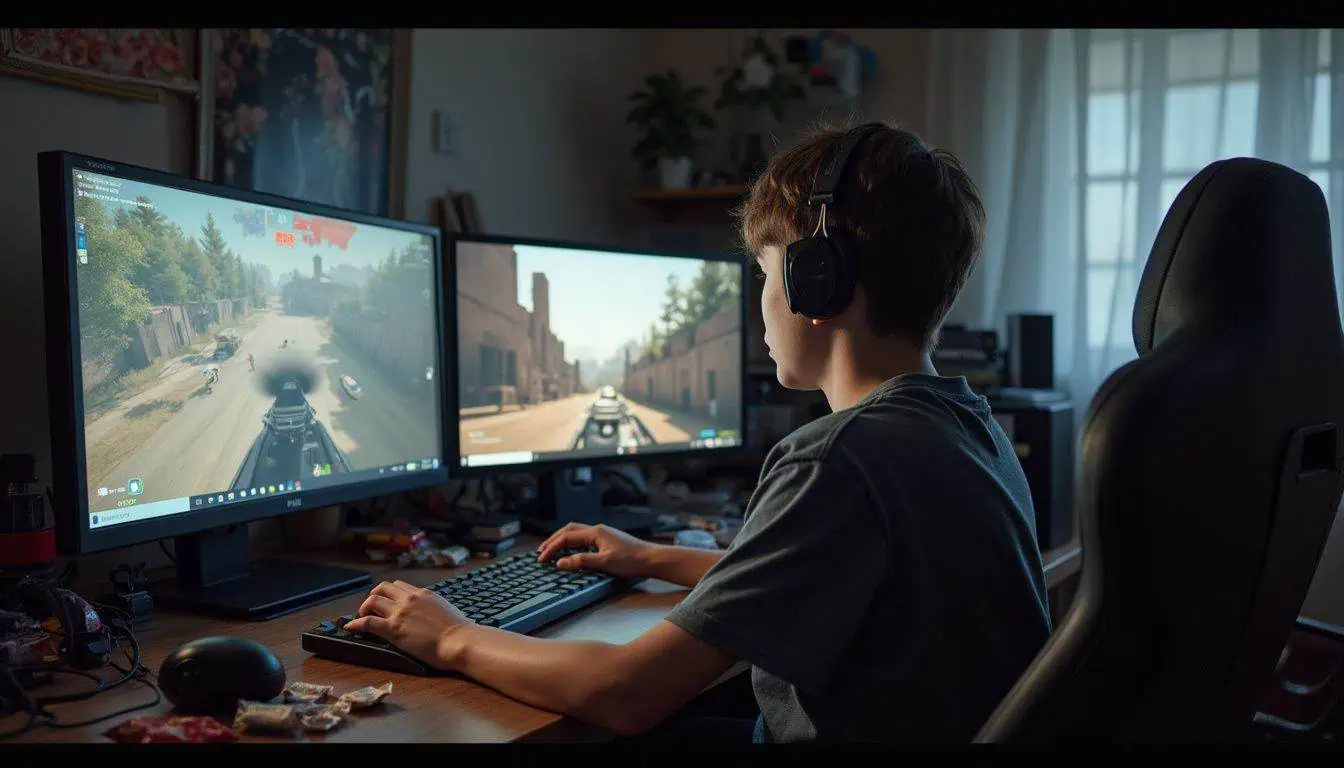
In 2025, Counter-Strike 2, Fortnite, PUBG, and Call of Duty, Warzone and Black Ops 6, will compete for the same players. This multiplayer golden age is crowded and loud.
New shooters launch every year, while older titles hold ground with strong updates and loyal communities. The competitive shooter market feels as packed as a Friday night lobby. Players juggle seasonal battle passes and ranked resets that demand attention.
Limited-time events lure you back when boredom hits. Rotating stores trigger fear of missing out. Engine tweaks and new rules shake metas almost monthly. If a game stands still, the player count dips.
Picking one main game can feel like choosing your favorite starter Pokémon. Hardcore fans read patch notes like sports stats. Casual players follow whatever trends on Twitch or YouTube. Even staying current on deals and reviews can feel like training, especially if you are eyeing your next step into tournament play.
People Also Ask
What is the main difference between casual and competitive gaming?
Casual gaming focuses on fun, relaxation, and social play. Competitive gaming centers on skill, strategy, and winning against others.
Why do some players prefer casual games over competitive ones?
Some people enjoy low-pressure matches where mistakes don’t matter much. They like to unwind with friends or try new games without stress.
How does teamwork differ in casual versus competitive gaming?
In casual play, teamwork feels loose; you might joke around or experiment together. In competitive matches, every move counts so communication gets sharper and roles are clear.
Can a player switch from being a casual gamer to a competitive one easily?
Yes but it takes effort and patience. You need to practice more often, learn advanced tactics, and handle pressure when stakes rise during tournaments or ranked ladders.
References
https://medium.com/@digitalmindforprint/competitive-versus-casual-gaming-7b6695cdb695
https://www.criticalhit.net/gaming/casual-vs-competitive-gaming-differences/
https://teenswannaknow.com/the-differences-between-competitive-and-casual-gaming/ (2023-04-20)
https://www.linkedin.com/advice/3/heres-how-you-can-distinguish-between-casual-gaming-professional-k1yff (2024-06-11)
https://gamequitters.com/types-of-gamers/
https://luhisummercamps.org/the-benefits-of-competitive-gaming-and-esports/
https://pmc.ncbi.nlm.nih.gov/articles/PMC8142893/
https://pmc.ncbi.nlm.nih.gov/articles/PMC7952082/
https://pmc.ncbi.nlm.nih.gov/articles/PMC8188925/
https://thisgengaming.com/2024/10/19/what-are-the-psychological-effects-of-competitive-gaming/ (2024-10-19)
https://www.researchgate.net/publication/371735925_Social_gaming_A_systematic_review (2023-06-27)
https://pmc.ncbi.nlm.nih.gov/articles/PMC7438909/
https://pmc.ncbi.nlm.nih.gov/articles/PMC11172082/
